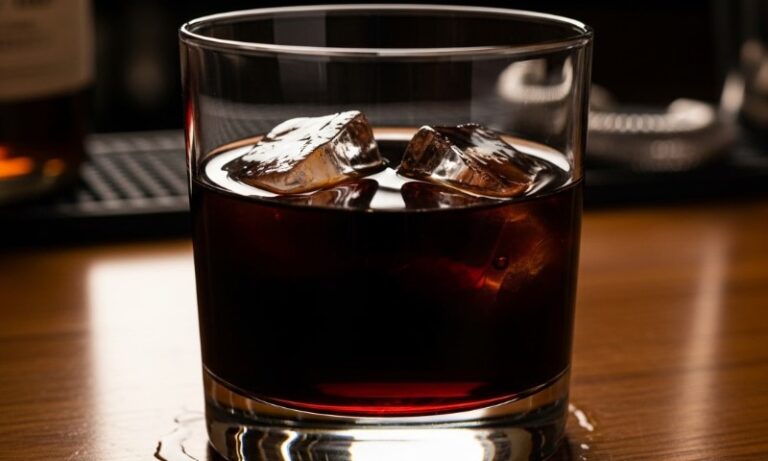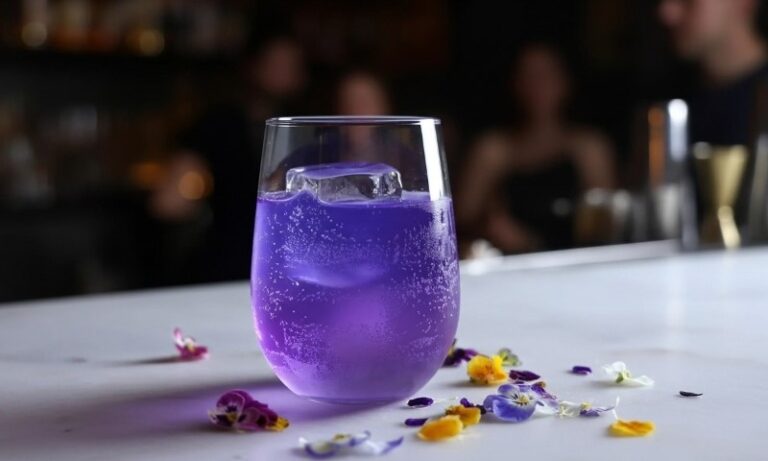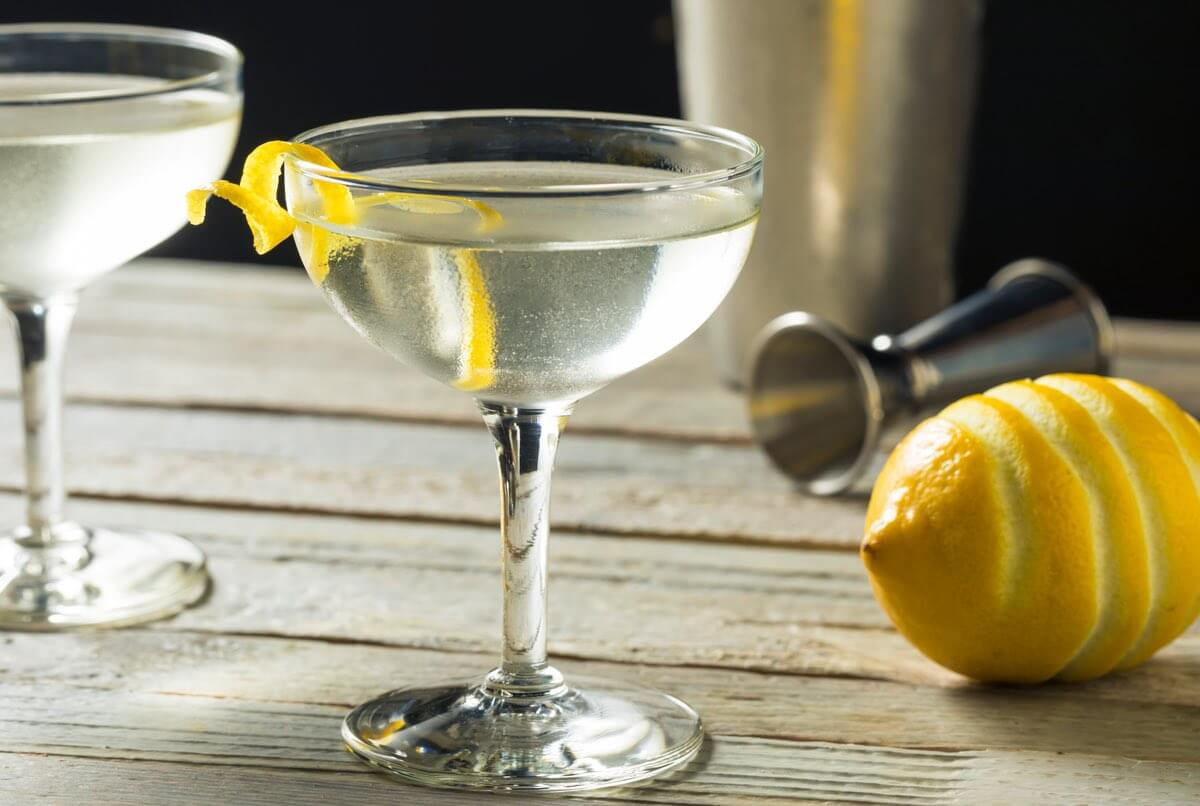The Classic Gin Martini is simplicity at its best—a cocktail that’s sharp, clean, and deeply satisfying. It’s not about over-the-top flavors or flashy presentations; it’s about balance. With just two main ingredients, this drink highlights the quality of the gin you use and the subtle complexity of dry vermouth.
This isn’t a drink for rushing. It’s a ritual: the chill of the glass, the precise stir, and the choice between an olive or a lemon twist. Whether you’re winding down after a long day or savoring a quiet moment before dinner, a well-made martini feels timeless and personal. It’s not fancy—it’s classic.

Table of Contents
ToggleClassic Gin Martini Recipe
Equipment
- Cocktail shaker or mixing glass
- Bar spoon
- Jigger or small measuring cup
- Strainer
- Martini glass (chilled)
Ingredients
- 2½ Ounces Gin choose a high-quality brand
- ½ Ounce Dry vermouth
- Ice cubes
- Lemon twist or green olive
Instructions
- Chill the Glass: Place your martini glass in the freezer for a few minutes or fill it with ice water to chill while you prepare the drink.

- Combine Ingredients: In a mixing glass or shaker, combine the gin and dry vermouth.

- Add Ice: Fill the mixing glass with ice cubes—enough to fully chill the liquid.

- Stir: Stir the mixture gently with a bar spoon for 20–30 seconds. This chills the drink and ensures a silky texture without over-diluting.
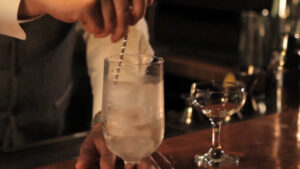
- Strain: Discard the ice water from your chilled martini glass, if used. Strain the martini mixture into the glass using a strainer.

- Garnish:For a lemon twist: Peel a strip of lemon rind, twist it over the drink to release its oils, and drop it in.For a green olive: Skewer it on a cocktail pick and place it in the glass.

- Serve Immediately: Enjoy your martini cold and crisp

Video
Notes
- Experiment with Ratios: Adjust the gin-to-vermouth ratio to your liking. Some prefer a drier martini (less vermouth), while others enjoy a more balanced mix.
- Gin Matters: Choose a gin with botanicals that you enjoy, as it’s the star of the drink. London dry gin is a classic choice.
- Shaken or Stirred?: While martinis are traditionally stirred, shaking creates a colder drink with a slightly frothy texture. Try both and see what you prefer!
- Glass Temperature: A chilled glass makes a huge difference in keeping the drink refreshing.
How to Choose the Right Gin for Your Martini
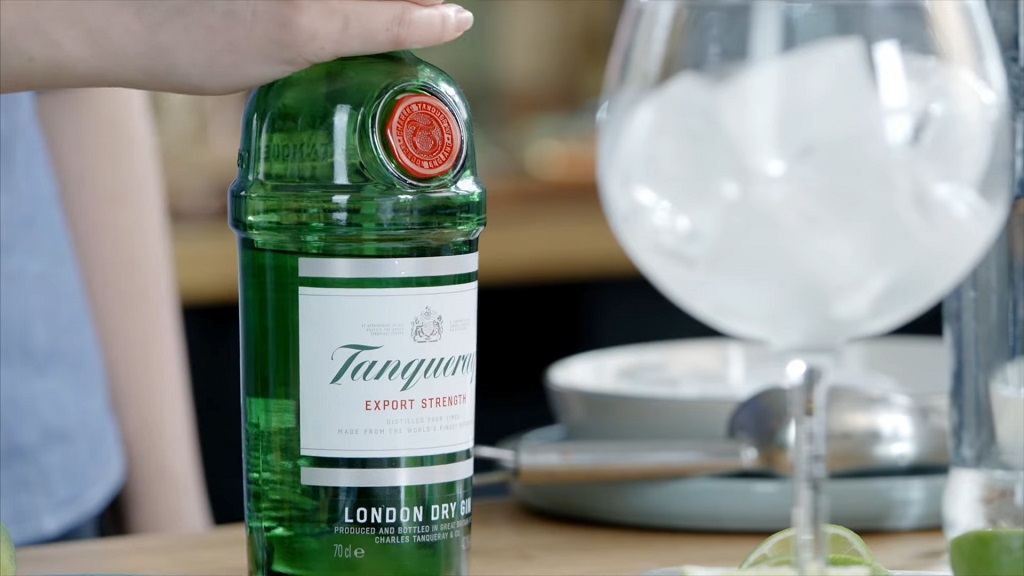
The gin makes or breaks your martini, plain and simple. It’s not about price or flashy labels—it’s about taste.
Start by figuring out what you like: classic London dry gin gives you that sharp, juniper-forward punch, while botanical gins lean into floral or citrusy notes.
If you’re new to martinis, go with a trusted classic like Beefeater or Tanqueray. Feeling adventurous? Try something local or craft. But whatever you choose, don’t skimp—this is the foundation of your drink.
If you have time, experience, and will, you can make your own gin.
Garnish Debate: Olive or Lemon Twist?

The decision says a lot about your style. The olive adds a salty, savory edge, grounding the drink and giving it that briny kick. It’s traditional, sure, but it’s also bold. A lemon twist, on the other hand, is for purists who love a clean, aromatic finish.
The citrus oils brighten the drink without overpowering it. Both are valid choices—just don’t overthink it. Pick the one that feels right to you.
Stirred vs. Shaken: What’s the Difference?
Let’s settle this: stirred is classic, elegant, and respectful to the gin. It keeps the drink silky smooth without over-diluting it.
Shaking, on the other hand, chills the martini faster but adds tiny ice shards and aeration, giving it a slightly different texture. If you like your martini super cold, shaking might win you over. Just use the Boston Shaker.
Ultimately, there’s no wrong way—just try both and see what works for your taste.
Pairing Your Martini with Food
Martinis don’t need fancy pairings, but a few good snacks can elevate the experience. Salty bites like roasted nuts, olives, or a simple cheese plate are classics for a reason—they bring out the drink’s crispness. Want to get fancy? Smoked salmon, oysters, or caviar are unbeatable.
And if it’s a full meal, steak or roasted chicken play well with a martini. Keep it simple and let the drink lead.
Common Martini Mistakes and How to Avoid Them
Martinis aren’t hard to make, but they’re easy to mess up. Don’t go overboard with the vermouth—it’s there to complement, not dominate. Always use fresh, quality ingredients; cheap gin or stale vermouth will ruin everything.
Skip the shortcuts: chill your glass, measure your ingredients, and stir (or shake) properly. And above all, serve it cold. A warm martini is a crime against cocktails.
Crafting the Perfect Martini Glass
The glass matters more than you’d think. A good martini glass is about more than looks—it keeps the drink cold and lets the aroma hit you before the first sip. Always serve in a chilled glass—it’s non-negotiable.
If you don’t have a martini glass, use a coupe or even a small wine glass, but never a mug or tumbler. Presentation counts, and your martini deserves the proper stage.
FAQs
What’s the Best Type of Ice to Use for a Martini?
The best ice for a martini is large, dense cubes. They melt slowly, keeping your drink cold without over-diluting it. Avoid crushed ice or small cubes—they’ll water down the flavor too quickly. If you can, use clear ice for a more polished look and slower melting.
Can I Use Vodka Instead of Gin?
Absolutely! While gin is traditional, vodka martinis are a popular variation, especially for those who prefer a cleaner, less botanical flavor. Just follow the same recipe, substituting vodka for gin. Keep in mind, though, that vodka martinis typically skip the vermouth or use much less.
Should I Rinse the Glass with Vermouth Instead of Mixing It?
Yes, you should! This technique, known as a vermouth rinse, involves swirling a small amount of vermouth in the chilled glass and then discarding it before pouring in the gin. It’s perfect for those who want just a whisper of vermouth in their martini.
How Do I Store Vermouth to Keep It Fresh?
Vermouth is a fortified wine, so it doesn’t last forever. Once opened, store it in the fridge with the cap tightly closed. It’s best used within a month or two for optimal flavor. If you don’t drink martinis often, consider buying smaller bottles to avoid waste.
Can I Add a Splash of Brine for a Dirty Martini?
Yes! If you enjoy a savory, briny twist, add a splash of olive brine to your martini—this creates a “dirty martini.” Start with a small amount (about ¼ ounce) and adjust to taste. Pair it with an olive garnish for the full effect.
Final Thoughts
The martini isn’t trying to impress you. It doesn’t need to. It’s not about trends, not about being flashy. It’s about getting it right, or not bothering at all. You pour it, you sip it, and you either feel it or you don’t. There’s no middle ground.
So, make one. Not for anyone else. For you. Get the gin you like. Maybe stir it a little longer than necessary. Or don’t. Pick the olive or the twist—hell, pick both if you can’t decide. And if you mess it up, toss it and start over. A good martini doesn’t care about perfection, just that you respect what’s in the glass.






